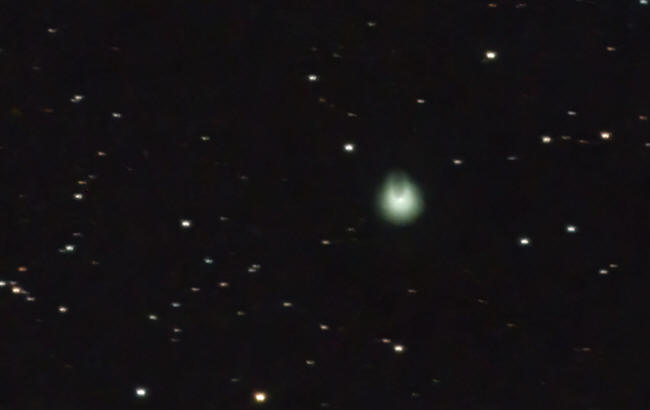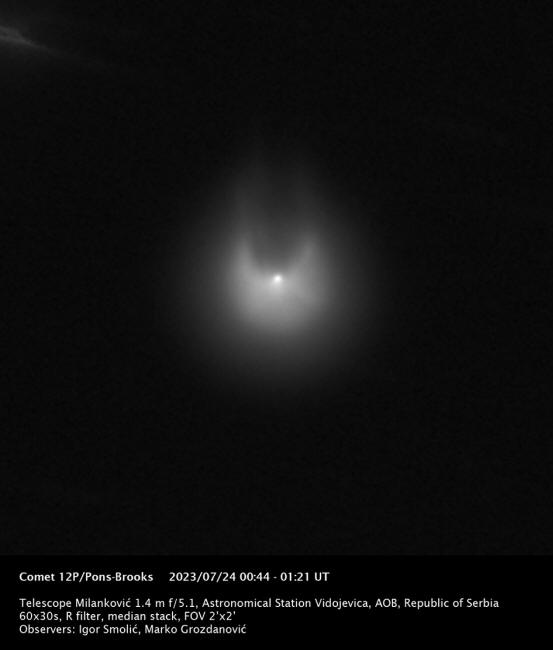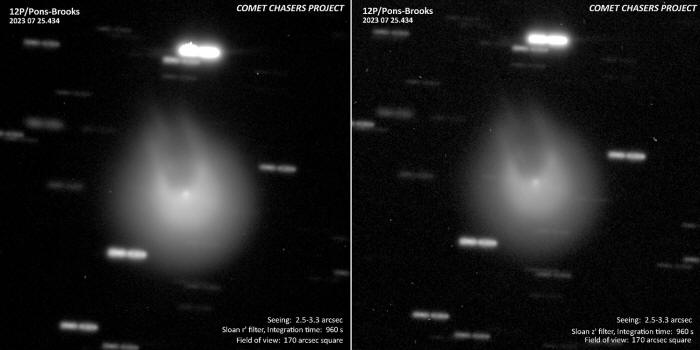|
July 26, 2023 from SpaceWeather Website
Until a few days ago, Comet 12P/Pons-Brooks looked like a perfectly ordinary comet. Then, something on its surface exploded...
Now it resembles,
These images are hot off the press (July 25.434) from the Comet Chasers, a team of researchers led by Helen Usher of Cardiff/The Open Universities.
They are using telescopes
at the
Las Cumbres Observatory network
to monitor this comet's unusual eruption.
It is now shining with
about the same brightness as an 11th magnitude star,
making it an easy target for mid-sized backyard telescopes.
Discovered in 1812 by
Pons and discovered again in
1883 by
Brooks, the bursty comet visits
the inner solar system every 71 years. Since the 19th
century at least seven significant outbursts have been observed.
Richard Miles of the British Astronomical Association thinks 12P may be one of 10 to 20 known comets with active ice volcanoes.
The "magma" is a cold
mixture of liquid hydrocarbons and dissolved gasses, all trapped
beneath a surface which has the consistency of wax. These bottled-up
volatiles
love to explode when sunlight opens
a fissure. At that time it is expected to become a naked-eye object at 4th or 5th magnitude.
The timing is significant because 12P will reach maximum brightness only a few days before the total solar eclipse on April 8, 2024.
Comet 12P is currently crossing the head of Draco not far from the north celestial pole.
Check out those horns!
|




